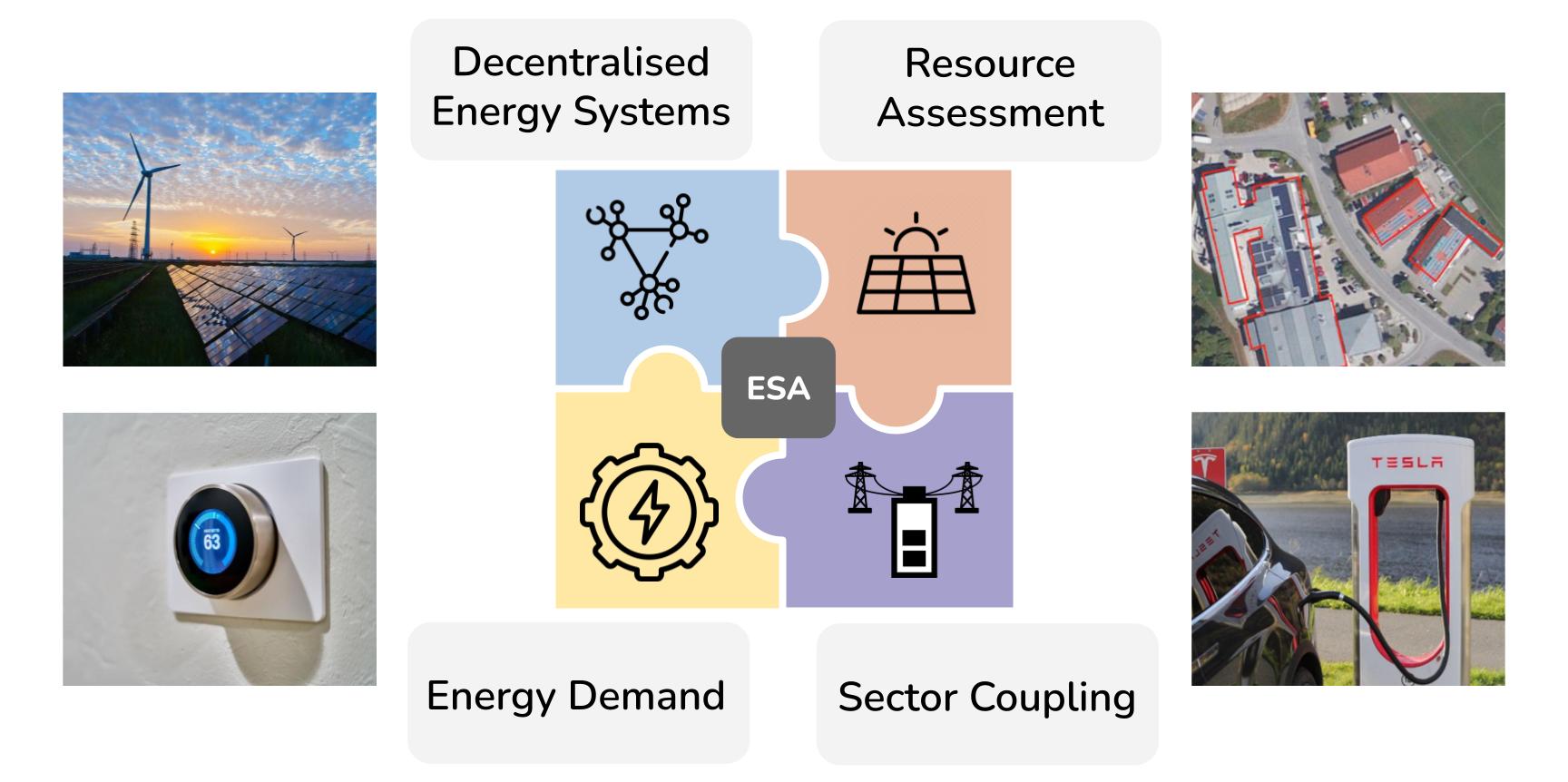Research

Research at the Chair involves the core elements of technology, economics and policy, and encapsulates both fundamental and applied aspects. The fundamental research involves developing new energy models and methods or extending existing ones, whereas the applied research concentrates on applying these approaches to specific research questions.
- Resource assessment methods for Low Carbon Technologies: This includes research methods partly based on open source data such as Bing Maps and Open Street Map (OSM). These are being extended to employ remote-sensing data (e.g. laser-scanning data and satellite images), in order to automatically determine building-level characteristics, as well as to reflect non-technical constraints like social acceptance and ecosystem impacts.
- Decentralised low-carbon energy systems: here we are especially interested in exploring interactions between different spatial and temporal scales of energy systems, as well as analysing measures to integrate renewable energies and to decarbonise specific sectors such as residential heating, electricity supply and/or industry. Energy generation and balancing in the context of local energy communities is a central theme here.
- Socioeconomic dimensions of energy demand: This research area is concerned with better understanding temporal and spatial demand-side diversity between con- and prosumers. It typically employs time-use and smart meter data to understand household load profiles and energy behaviors based on detailed bottom-up approaches and models, for example clustering or classifying users based on their profiles.
- Energy infrastructure, sector coupling and energy system integration: This area addresses questions relating to the security of supply of critical (energy) infrastructures, potential flexibility contributions of power to heat and power to gas, and the trade-offs between individual integration measures for renewable energies. Typically this area incorporates energy transmission and distribution infrastructure into the models, for example to analyze where natural gas or hydrogen infrastructure should be built